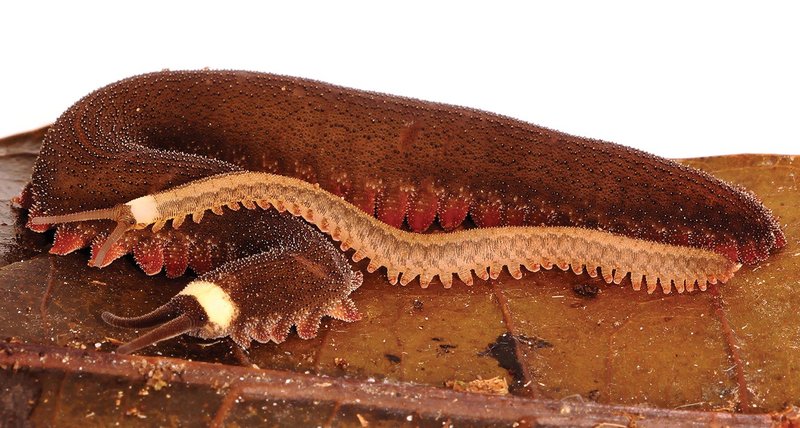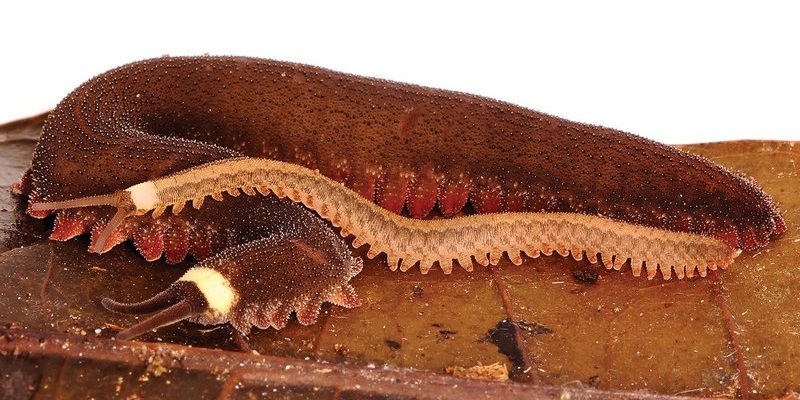
So, what exactly causes these color variations? Let’s dive in and explore the genetic factors that make velvet worms so uniquely colorful. Imagine sipping coffee while I share how these tiny creatures, often overlooked, exhibit such a mesmerizing palette, all thanks to their genetics.
What Are Velvet Worms?
Before we delve into their genetics, let’s take a moment to appreciate what velvet worms actually are. These peculiar creatures belong to the phylum Onychophora. They look a bit like a cross between a worm and a caterpillar, complete with soft bodies, multiple legs, and a somewhat fuzzy appearance. They tend to thrive in moist, leaf-littered environments, mostly in tropical and subtropical regions.
Velvet worms are fascinating hunters. They use a sticky slime to immobilize prey, which can include small insects. They’re not just interesting in terms of their hunting methods; they also showcase an impressive range of colors. This isn’t just for show; their colors often serve as camouflage or warning signals to predators.
You might be wondering why scientists are so interested in their colors. Well, color variations can indicate a lot about genetics, evolution, and adaptation. The study of velvet worm color morphs gives us a glimpse into the intricate tapestry of life and survival.
The Role of Genetics in Color Morphs
Genetics play a crucial role in determining color morphs, not just in velvet worms, but across the animal kingdom. Essentially, genes are the instructions that dictate everything from an organism’s size and shape to its color. For velvet worms, specific genes are responsible for producing pigments in their skin.
One of the main contributors to color variation in velvet worms is the expression of certain genes, particularly those involved in producing melanin—the pigment responsible for darker colors like browns and blacks. Other pigments, like carotenoids, can result in yellows and reds. The amount and combination of these pigments lead to the stunning diversity of colors we see.
You might be thinking, “But how do these genes change?” Here’s the thing: environmental factors can influence gene expression. Factors like temperature, humidity, and even diet can affect how these genes turn on or off, leading to different color morphs appearing in different environments.
Environmental Influences on Color Variations
In nature, the environment plays a significant role in shaping the coloration of organisms. For velvet worms, where they live can dictate the colors they develop. In darker, leaf-littered areas, worms may exhibit darker colors for camouflage. Meanwhile, in brighter, more open habitats, lighter colors may provide better protection against predators.
Interestingly, researchers have found that when velvet worms are relocated to different environments, their color can change over generations. This adaptability is akin to how a chameleon changes its hue based on its surroundings—nature’s way of ensuring survival.
Moreover, the availability of certain nutrients in the soil can influence the pigmentation as well. If a velvet worm’s diet is rich in carotenoids, for instance, you might see a splash of vibrant red or orange in its coloration.
Color Morphs and Sexual Selection
Sexual selection is another fascinating factor influencing color morphs in velvet worms. Like many animals, velvet worms may display specific colors to attract mates. Bright colors can signal good health and strong genetics.
In some species, males may have more vivid colors to stand out and attract females. This can create a visual spectacle in their natural habitat, showcasing not just the beauty but also the evolutionary pressures at play.
Interestingly, the color of males can also influence their success in mating. Researchers have observed that males with more vibrant colors often have higher mating success than those with duller hues. This preference by females encourages more elaborate color variations over time, leading to a rich diversity within species.
Genetic Variation and Adaptation
Genetic variation is vital for any species’ ability to adapt to changing environments. For velvet worms, slight variations in their genetic code can lead to different color morphs, offering advantages in survival.
The ability to adapt to various conditions helps ensure that the species continues to thrive. If a certain color provides better camouflage in a specific environment, those worms are more likely to survive and pass on their genes. This process drives the evolution of color morphs over generations, essentially creating a living tapestry of genetic diversity.
You may find it fascinating that not all velvet worms will adapt at the same rate. Some populations may adjust quickly to their environment, while others may take longer, depending on the genetic diversity within that group. It’s a great reminder of nature’s complexities.
Research and Discoveries in Velvet Worm Genetics
Recent studies have focused on understanding the genetics behind the color morphs of velvet worms, utilizing advanced techniques like genomic sequencing to identify specific genes responsible for pigmentation. This research not only sheds light on the velvet worm’s unique color palette but also helps scientists understand broader evolutionary patterns in other species.
For example, studying the genetic makeup of these animals can offer insights into how color morphs arise in other organisms, potentially contributing to conservation efforts. By identifying the genes that allow for color adaptation, conservationists can better understand how to protect these creatures and their habitats.
Here’s the thing: as we learn more about velvet worms, we’re also learning about evolution and genetics as a whole. They’re not just quirky little creatures to observe; they’re key players in the story of life on Earth.
The genetics behind velvet worm color morphs is a captivating subject that reveals much about nature’s brilliance. From camouflage to sexual selection, their color variations tell stories of survival and adaptation.
Understanding these incredible creatures provides insight into the intricate relationships between environment, genetics, and evolution. Each vibrant hue is a testament to nature’s creativity, painted with the brush of genetic diversity and environmental influence.
So, next time you see a velvet worm, appreciate its color—it’s more than just a pretty sight; it’s a piece of the fascinating puzzle of life on our planet.

